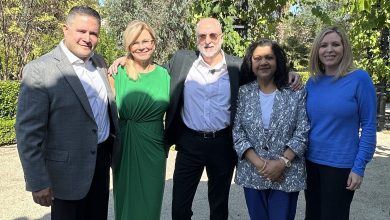
The White House Finalizes Minimum Staffing Mandate
By Jim Nelson | April 22, 2024
WASHINGTON, DC — The White House has finalized the first-ever minimum staffing rule at nursing homes, Vice President Kamala Harris announced today. The mandate, which will be phased in (rural communities will have more time to comply), requires that all nursing homes receiving Medicare and Medicaid funding provide no less than 3.48 hours of nursing care per resident, per day.
This rule was proposed last fall and it initially called for a minimum of three hours of daily nursing care per resident, rather than the 3.48 hours per day mandated in today’s announcement. The intent behind this new mandate is to prevent those nursing homes that are chronically understaffed from remaining that way.
“When facilities are understaffed,” a White House fact sheet said, “residents may go without basic necessities like baths, trips to the bathroom, and meals — and it is less safe when residents have a medical emergency.”
The White House also said that this mandate is not only about protecting residents, but it will also help to protect staff.
“Understaffing can also have a disproportionate impact on women and people of color who make up a large proportion of the nursing home workforce. Without sufficient support, these dedicated workers can’t provide the care they know the residents deserve.”
Today’s announcement called for 3.0 hours of the nursing care per resident, per day, to be split between registered nurses (0.55 hours) and certified nurse aides (2.45 hours); how the remaining 0.48 hours are to be allotted was not immediately clear.
Breaking down those numbers, for each 100 residents a community will need two or three RNs and at least 10 or 11 CNAs, plus two more nurse staff per shift (defined as RNs, LPNs, or CNAs), according to the White House fact sheet. Moreover, nursing homes must have a registered nurse onsite at all times.
Nursing homes and other impacted communities that are located in areas with workforce shortages may receive a “limited, temporary exemption” if they demonstrate a good faith effort to hire.
“Strong transparency measures will ensure nursing home residents and their families are aware when a nursing home is using an exemption,” the White House also said.
Meanwhile, the industry wasn’t happy with the proposed ruling in September, with the biggest complaint being the timing given the ongoing and staffing challenges. According to a September analysis released by the American Health Care Association, which represents more than 14,000 nursing homes and other long-term care facilities, meeting the proposed mandate would require hiring more than 100,000 additional nurses and nurse aides at an annual cost of $6.8 billion. Finding those extra 100,000 RNs is the biggest challenge facing the industry because there is already a national shortage of roughly 200,000 RNs. The fear is that this new requirement will force some homes and communities to close.
“It is unconscionable that the Administration is finalizing this rule given our nation’s changing demographics and growing caregiver shortage,” said AHCA/National Center for Assisted Living President/CEO Mark Parkinson in a statement. “Issuing a final rule that demands hundreds of thousands of additional caregivers when there’s a nationwide shortfall of nurses just creates an impossible task for providers. This unfunded mandate doesn’t magically solve the nursing crisis.
“The Administration has gone even farther than originally proposed, making these requirements even more out of touch and out of reach,” he added. “At the end of the day, the agency is overstepping with a one-size-fits-all enforcement approach that is deeply flawed.”
The AHCA analysis in September also found that 94 percent of nursing homes are not meeting at least one of the proposed staffing requirements.
“When nearly every nursing home in the country would be considered out of compliance if this went into effect today, it demonstrates how out of touch Washington bureaucrats are with reality,” Parkinson said in a statement at the time. “We all want to grow the nursing home workforce, but this impossible policy is absolutely not the way to do it.”
On the other hand, today’s rule will make plenty of people happy; labor unions, consumer advocates, and other organizations voiced support in the fall for the proposed mandate in a letter to Congress and an advertisement.
So now what? Is this the end of it or just another step on the journey?
“This fight is not over,” AHCA’s Parkinson said today. “We will vigorously defend our nursing home members, those they serve, and those they employ. Momentum against the mandates continues to build among both Democrats and Republicans, and we hope to work with lawmakers on more meaningful solutions that would help boost the long-term care workforce. For the sake of our nation’s seniors and their caregivers, we must find a better way.”




